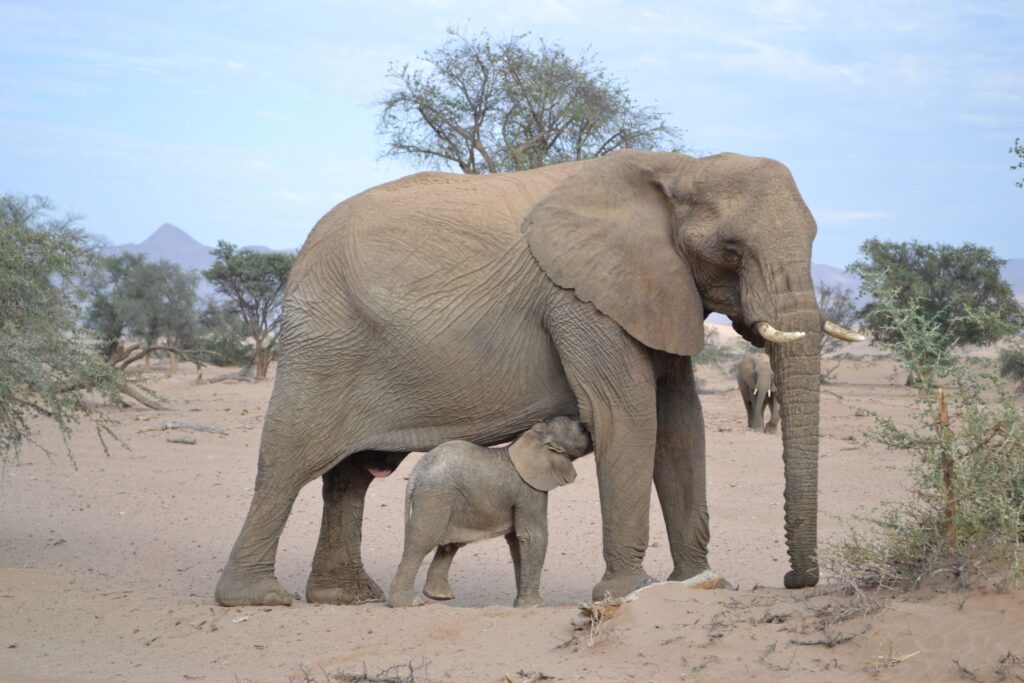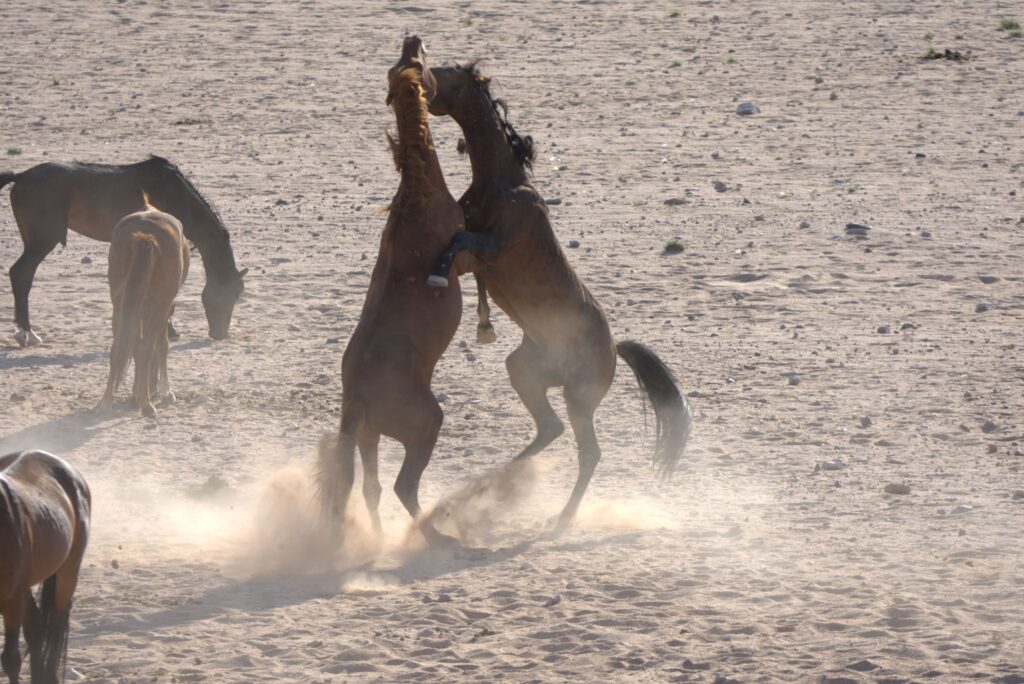The African honey badger
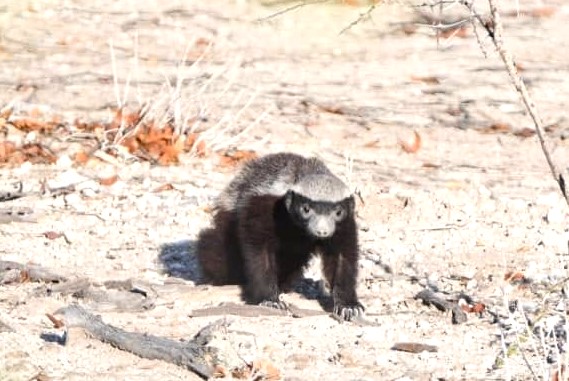
The African honey badger, or Mellivora capensis, known locally in Namibia and other parts of Africa as the “ratel,” is a tough and resilient carnivore famous for its strength, intelligence, and adaptability.
Honey badgers are relatively small, with a body length of 55–77 cm (22–30 inches) and weighing around 9–16 kg (20–35 lbs). Despite their size, they have muscular builds with powerful legs and long claws, especially adapted for digging. They have a distinct appearance with a striking black body and a white or grayish “cape” that runs across the top of the head and back. Their skin is exceptionally thick and loose, making it hard for predators to grasp and allowing the honey badger to twist and bite attackers even when restrained.
Honey badgers are known for their aggressive nature and are often called “fearless” animals. They will defend themselves against much larger animals, including lions and leopards. They are omnivorous with a varied diet that includes small mammals, birds, reptiles, insects, and, famously, honey from beehives. Honey badgers are intelligent and have shown problem-solving skills. For instance, in captivity, they’ve been observed using tools to escape enclosures.
Honey badgers are widely distributed across Namibia and are well-suited to a variety of habitats, from savannas to deserts. They are especially common in dry regions and open woodlands, where they can find food and shelter in underground burrows. In Namibia, honey badgers can sometimes come into conflict with farmers, as they may raid poultry coops and bee farms. However, they also play a role in controlling populations of other animals that can be pests to humans.
The African honey badger is listed as Least Concern due to its widespread range and adaptability. However, habitat loss and human-wildlife conflict can locally threaten populations, so monitoring is essential. Conservation initiatives often involve educating communities to reduce conflict and preserve their habitats.
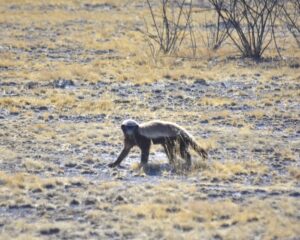
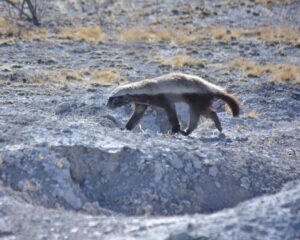
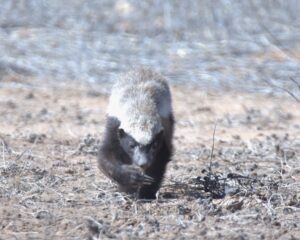


Honey guide-honey badger relationship
Their association with honey led to their name, though they are opportunistic feeders and consume whatever is available. The honey badger has a fascinating symbiotic relationship with a bird called the greater honey guide, which helps it locate beehives. This unique mutualistic partnership, found primarily in parts of sub-Saharan Africa, is based on a combination of communication and cooperation. The honey guide seeks out a honey badger and catches its attention by making a distinctive chattering call and moving in a specific direction. Once the honey badger notices the honey guide, it follows the bird as it flies from perch to perch, guiding the badger to a beehive. The honey badger, with its strong claws and powerful jaws, breaks into the beehive to access the honey, larvae, and beeswax. It often endures bee stings, which its thick skin and high pain tolerance help mitigate. After the honey badger has had its fill, the honey guide swoops in to consume leftover wax, bee larvae, and other hive remnants.
